Who should pay for wildlife management?
By Hilary Byerly Flint
“We’re pretty darn lucky,” says Brian Nesvik, director of the Wyoming Game and Fish Department. “People come to Wyoming [for] bighorn sheep and grizzly bears, elk and moose, sage grouse and waterfowl.” Nesvik’s agency is responsible for managing the state’s wildlife, which includes some of North America’s most diverse and abundant populations of large mammals. “We’re always going to have that as long as we continue to do the right things and put our resources in good places. We’re going to continue to be able to provide that wildlife resource for a lot of different people to enjoy.”
Wildlife and the tourism it attracts are particularly exceptional in the Greater Yellowstone Ecosystem—a 22 million-acre area encompassing Yellowstone and Grand Teton National Parks. Craig Benjamin, conservation director at the Greater Yellowstone Coalition, agrees with Nesvik’s assessment. “Our wildlife is generally doing pretty well. [Wyoming] Game and Fish does a good job. We have a relatively healthy ecosystem. There are huge pressures and huge threats, but this isn’t 1975 where we have 130 bears left.”
But some are less optimistic, both about the health of the ecosystem and the promise of the status quo. Kristin Combs, executive director of Wyoming Wildlife Advocates, says “The Greater Yellowstone Ecosystem seems like a wildlife paradise and people think, ‘Oh, it’s so great. Everything’s there’…But when you look beneath the surface, wildlife here is still facing an incredible uphill battle, especially large carnivores and non-game species.” In her view, and in the view of a growing coalition of organizations, that uphill battle is the result of state wildlife agencies’ focus on game species, which are animals that can be hunted or fished. This focus, they say, is to the detriment of other species, overall ecosystem health, and the interests of all those who value wildlife.
At its root, this controversy is about funding. State wildlife management is funded by a so-called “user-pays” system that was established more than a century ago and hasn’t evolved with changing values. Many of today’s wildlife users, the people who interact with and benefit from wildlife, don’t provide revenue to support broader management, leaving state wildlife agencies with limited and ear-marked resources. In Wyoming, for example, game-related taxes and fees provide 85 percent of Game and Fish’s funding, and game species receive 87 percent of the agency’s spending. That leaves less than 15 percent for non-game species like raptors, songbirds, certain small mammals and fish, bats, amphibians, reptiles, crustaceans, and mollusks. Combs and others say it’s time to rethink this model.
~
Wildlife agencies’ funding and priorities are rooted in their origins. In the late 1800s, profit-seeking hunters and government policies caused steep declines in wildlife populations. “Sportsmen were the core of the effort to rebuild those populations,” says Nesvik, “and they did it through funding.” Recognizing the need for wildlife protections if they were to continue their sport, recreational hunters and anglers successfully advocated for better management. By 1910, every state had established a commission to protect wild game and fisheries and created wildlife agencies to manage hunting and fishing.
These new agencies were funded by asking those who “used” wildlife to pay for its conservation. States generated revenue by selling licenses and hunting tags, and more money came from two federal tax laws. The Pittman-Robertson Act of 1937 imposed an 11 percent tax on the sales of firearms and ammunition. Soon after, the Dingle-Johnson Act levied a similar tax on fishing equipment and allocated a portion of the gasoline fuel tax (attributable to small engines and motorboats) towards fisheries conservation. As a result, wildlife management was originally in service of, and funded by, hunting and angling.
This legislation, and subsequent coordination between the federal government and states, formed the basis of the North American Model of Wildlife Conservation. Among other tenets, the model holds that wildlife are a public trust resource that should be be managed for the benefit of all citizens, and management should follow scientific principles. It is a unique and successful model that has largely restored and maintained wildlife populations.
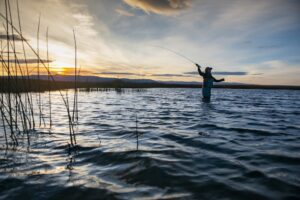
Over time, state wildlife agencies have been asked to do more without major new sources of funding. “Sometime in the 1960s and 70s, you started to see this shift in wildlife management and wildlife management expectations of state agencies, particularly with the passage of the Endangered Species Act,” says David Willms, associate vice president of public lands for the National Wildlife Federation. The environmental awakening of the time led to new laws and broader visions of environmental management that went beyond game species. Since then, the US Fish and Wildlife Service intervenes to manage endangered species while state wildlife agencies are left to manage the rest of the animal ecosystem, including those species that might become endangered.
Facing a broadened ecological scope without commensurate funding, state agencies have worked hard to leverage what they have. Willms says, “The money to manage all wildlife—those resources just weren’t there, and they haven’t been there. It’s been, how do you stretch the hunter-angler dollars as far as you possibly can to be able to manage all species?”
Wyoming Game and Fish, for its part, has a nongame bird and mammal program. In the last year, the agency conducted bald eagle and trumpeter swan monitoring, black-footed ferret management, studies of American pika, shrews, and prairie dogs, and more. But with just an eighth of the agency’s budget and a fraction of its staff, the nongame program can’t directly address all 229 species of greatest conservation concern, most of them nongame, identified in the State Wildlife Action Plan.
When Benjamin worked for the National Wildlife Federation, “That was the thing we heard from [state wildlife] agencies across America: ‘We want to go work on all these species that are not endangered, yet. They could become endangered, but they’re not game species, and we don’t really have funding for them because we’re not supported by dollars that come in for those species.’”
State wildlife agencies also take advantage of an umbrella effect. “A lot of the work [Wyoming Game and Fish] does to manage for big game benefits all species,” says Benjamin. “The habitat restoration or migration corridors for pronghorn or elk, that’s then benefiting hundreds of other species.” Indeed, a 2016 literature review in Biological Conservation found evidence that managing for game could have positive impacts on non-game species by protecting habitat and mimicking natural disturbances. Recent work by Arthur Middleton, an ecologist who studies the Greater Yellowstone Ecosystem, showed that protected big game migration corridors help to sustain carnivores, scavengers, and other animals on the landscape. But these findings aren’t conclusive. The 2016 literature review also identified neutral and negative impacts of game management on other species and concluded that, with only 26 studies at the time, the impacts were both variable and poorly understood.
In the end, Nesvik says, “there’s an endless list of projects that need to be done. We’ve taken the resources we have and prioritized the absolute most important places we can go to try to spread that out across the state.” He also says “a lot of our work and the messaging and the justifications revolve around species that are hunted and fished. That’s really our charge. That’s what we do.”
~
Not only has this user-pays funding model failed to support wildlife agencies’ expanded management mandate, it also neglects dramatic changes in wildlife users and payers nation-wide. When the Pittman-Robertson and Dingle-Johnson tax laws passed, hunters and anglers were the primary users of wildlife and the primary buyers of firearms. Today, many people who “use” wildlife do not contribute towards its management, and firearms sales are increasingly disconnected from hunting.
According to a 2016 report from the US Fish and Wildlife Service, only 4 percent of US residents hunt, down from 7 percent in 1991. In contrast, 34 percent reported watching wildlife. Wildlife viewing is one of the fastest growing wildlife recreation activities and a top reason for visiting national parks like Yellowstone and Grand Teton.
Further, while most Americans once thought of wildlife as existing solely for the benefit of humans, a 2021 paper in Nature Sustainability showed that, nationally, Americans increasingly think of wildlife as part of their social community and are concerned “about wildlife population decline, habitat protection, restricting humans to benefit wildlife, and maintaining natural conditions.”
Because the North American Model of Wildlife Conservation says that wildlife should be managed for the benefit of all citizens, these preferences have management implications. Predators like wolves, for example, are hunted for sport and as a way of bolstering the populations of other huntable species like elk and deer (in addition to protecting livestock). But a 2016 study found that wolf hunting and trapping along the boundaries of Denali and Yellowstone National Parks reduced wolf sightings within the parks.
Research also shows—and Native people have long known—that a broad range of plant and animal species and interactions are necessary to support ecosystem health, ecosystem services, and successful conservation, which in turn provide benefits to society. Jason Baldes, member of the Eastern Shoshone Tribe and executive director of the Wind River Tribal Buffalo Initiative, says that “restoring the holistic nature of our environment… means we need to have water in the river. It means we need to have buffalo on the ground and able to move. It means we need to have those wolves and bears living their lives.”
But large-scale shifts in use, values, and knowledge have not been accompanied by funding. Despite research on the ways that “non-consumptive” recreation can disturb, displace, and even damage wildlife populations, wildlife viewers are not paying to protect or mitigate their impacts to wildlife in the ways that hunters and anglers do. Moreover, rural communities—where traditional values remain prevalent and where hunting and angling are central to many personal identities, communities, and economies—continue to bear most of the costs of conflict with wildlife.
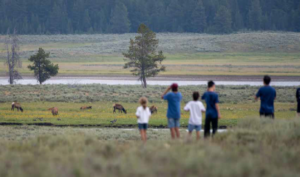
At the same time, there have been shifts in who is funding wildlife management. Today, hunters generate the largest share of revenue for state wildlife agencies only in certain states like Wyoming and Montana, where hunting is still prominent and out-of-state hunters purchase expensive licenses. Nationally, revenue from hunting licenses and fees has stayed flat at about $1 billion annually since 2000, whereas revenue from Pittman-Robertson excise taxes has increased sixfold in that same time period, to $1.2 billion. Now, firearms and ammunition buyers are the largest single source of user-generated funds for state wildlife management.
The thing is, “about 75 percent of Pittman-Robertson funds are not coming from hunters. They’re coming from people that buy guns [and ammunition], but not for hunting,” says Kevin Bixby, founder of Wildlife for All, a national campaign whose mission is to “reform wildlife management to be more democratic, just, compassionate, and focused on protecting wild species and ecosystems.” A 2017 report from Pew Research Center found that protection has surpassed hunting as the number one reason for firearm ownership, with 67 percent of gun owners citing protection as a major reason they own a gun and only 38 percent citing hunting. Sport (or recreational) shooting is not far behind, cited by 30 percent of gun owners. Bixby says that there is a similar decoupling of user and payer with the Dingell-Johnson funds, “because Dingle-Johnson taxes are imposed on fishing equipment but also on the gasoline that goes into lawn mowers and snowblowers.”
Willms says, “The growth of the firearms industry, especially from the recreational shooting standpoint, has kind of created a bandaid for the declining hunter participation nationally.” In turn, these recreational shooters and lobbies are gaining a voice in how state wildlife management funding is used. For example, the National Shooting Sports Foundation successfully lobbied for Pittman-Robertson funding to pay for shooting ranges on public lands.
As scholars John Casellas Connors and Christopher Rea wrote in their article “Violent Entanglement: The Pittman-Robertson Act, Firearms, and the Financing of Conservation,” “The source of funding is thus redefining the user and reshaping the policy, as opposed to maintaining a fixed definition of what is used and enlisting other users of the [public] trust (e.g., hikers) as payers.”
~
That’s why for many, funding is the place to start modernizing state wildlife management.
Some ideas adhere to the user-pays model. Both the Wyoming and Montana Legislatures passed resolutions in the last five years asking the National Park Service to collect a “Conservation Fee” from Yellowstone and Grand Teton National Parks visitors. These resolutions are non-binding, but they intend to make a point—the millions of people who visit these parks each year to see wildlife ought to contribute to the state agencies that manage those animals as they roam beyond park boundaries. A similar idea is to levy “backpack taxes,” as has been done in Virginia and Texas, which tax certain outdoor equipment to parallel the excise taxes on hunting and fishing equipment.
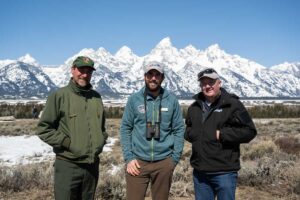
Another avenue could fundraise from businesses that profit from wildlife. Taylor Phillips, who runs an ecotourism business in Jackson, Wyoming, says “For years I’ve been in the tourism space, interacting with guests, showing them the diverse array of wildlife. And I’ve seen this disconnect of who benefits from wildlife and who pays for it. The tourism sector that is largely driven by wildlife doesn’t financially contribute.” In response, Phillips founded WYldlife for Tomorrow, which solicits businesses to voluntarily contribute a portion of their profits to fund wildlife conservation projects conducted by Wyoming Game and Fish.
Bixby, on the other hand, wants to stop user-pay entirely. “Wildlife is in the public trust, it’s a public good,” he says. “It’s like schools or libraries or fire stations. We wouldn’t think access to these public goods should go to the people that pay more in taxes. No, everybody should have access to them, because everyone benefits. Same with wildlife. We all benefit from wildlife whether we use it in some way or just enjoy the fruits of natural ecosystems that wild animals contribute to. I really don’t like the idea of ‘user pays’ at all in terms of wildlife conservation funding. We’re all users.”
Nationally, the proposed Recovering America’s Wildlife Act (RAWA) offers perhaps the greatest hope of funding for more inclusive wildlife management. The legislation would provide around $1.4 billion annually to be split between states and tribes. “It would be a game-changer for states, in the revenue that would be created,” says Willms, whose organization is among the leading advocacy groups for the legislation. “I don’t know that you’d have to do much more if that were to pass. It would be such a huge shot in the arm.”
RAWA would also address the current wildlife funding system’s insufficient support for tribal wildlife management. “We have a tribal fish and game department on the [Wind River] reservation that has three game wardens for a reservation the same size as Yellowstone,” says Baldes, who is also the tribal buffalo coordinator for the Tribal Partnerships Program of the National Wildlife Federation. “Tribes are ineligible for Pittman-Robertson funding. While most state agencies receive quite a bit of federal dollars for wildlife management, tribes are left out of that. Recovering America’s Wildlife Act would ensure that tribal governments can protect their own laws and lands with law enforcement.”
None of these funding alternatives are perfect; voluntary efforts will be too small to make a difference, new fees and taxes require changes in legislation, and user-pays schemes can further disenfranchise already marginalized groups. In the case of RAWA, which failed to pass the US Senate in late 2022 and was reintroduced in March 2023, the source of funding is still stuck in political negotiation.
~
Advocates are also pushing to diversify the voices at the decision-making table. In almost every state, wildlife commissions advise and oversee the wildlife agency and its budget. They are also overwhelmingly populated by sportsmen. Commissioners are not required to have scientific or ecological expertise. “It has to start with reform of wildlife commissions, because they have an enormous amount of power,” says Combs. “Then you can start having conversations about how to let more diverse groups contribute to wildlife conservation and management and start putting those into action.”
Indigenous leaders could play a greater role in informing management, particularly on public lands and in areas where tribes hold off-reservation hunting rights. “I respect [using science and technical information] but there are a lot of things that aren’t explained by science, and that’s why you need Indigenous voices in what we’re doing,” says Wes Martel, member of the Eastern Shoshone Tribe and senior Wind River conservation associate for Greater Yellowstone Coalition.
Indigenous voices can also help elevate concerns around how wildlife management and legislation have marginalized and excluded Native Americans from their traditional lands and resources. “From the scientific and technical side, we try to follow the advice of biologists and scientists when it comes to management,” says Martel, “but at the same time, give recognition to our elders and the ceremonial and traditional uses that we have for some of our plants and animals and other things that we utilize. You know, those are not really recognized or upheld under state law.”
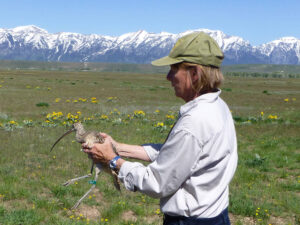
Even with better funding and a more diverse group of decision makers, it may be necessary to create more flexibility in how existing funds get spent. Dingle-Johnson excise tax revenues can only be used for “species of fish which have material value in connection with sport or recreation in the marine and/or fresh waters of the United States.” The authorizing legislation for state wildlife agencies also limits management. Bixby gives the example of black-tailed prairie dogs in New Mexico, which “have been reduced to about 10 percent of their original range and yet, under state law, our state wildlife agency does not have authority to manage them.”
Often, both federal excise tax revenues and agency mandates are restricted to mammals, birds, and fish, thereby excluding management and conservation of other species critical to healthy ecosystems. This prompted a September 2022 ruling by the California Supreme Court that classified bees as fish to allow for their protection under the state’s endangered species act.
The absurdity of such an action lays bare the limitations of our current system. So much has changed since the inception of non-Indigenous wildlife management and conservation in the United States: science, values, users, and funders. Updating wildlife management to reflect these changes has been and will be a challenge. Combs, of Wyoming Wildlife Advocates, acknowledges this. “I want to give [Wyoming Game and Fish] credit for doing a difficult job, because it is hard to manage people and wildlife at the same time. They get it from all sides. I don’t envy their position.”
With this reality, it’s unclear whether or how the system might meaningfully change. “Typically things move when there’s some sort of crisis or big threat,” says Benjamin of Greater Yellowstone Coalition. “And I don’t feel like that exists right now.”
What exists are passionate people who care about our wildlife—from advocacy groups to legislators, Indigenous leaders to agency directors—all working to gradually refine wildlife funding and management in ways that better accommodate the diversity of wild species and human values in the United States.
Hilary Byerly Flint is a senior research scientist at the University of Wyoming. She is based in Jackson, Wyoming.

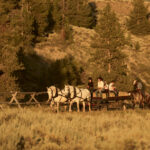
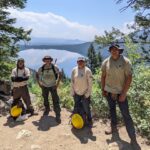
Whenever I see the word “management” used by state wildlife agencies I understand that it means kill, killing wildlife as the primary management tool. Wyoming is not doing great on wolves, native carnivores that provide enormously important ecological services, if they’re allowed to live, which generally they are not. 75% of Wyoming is an instant kill zone for “predators”. This iextreme hostility to basic ecological integrity does not bide well for wildlife or humans. The Wyoming Game department feeds elk like they are domestic cows and that has caused a high level of mortality from disease transmission in concentrated ungulate herds. Wyoming Game likes to congratulate itself for doing a great job of “conserving” wildlife but the real focus is, and always has been, on recreational killing.
I am a retired wildlife rehabber worked mostly with waterfowl which is a hunted species. I had been asked several times to attend community meetings regarding wildlife where they were mostly opposed to hunting.
Most were not aware of how the state agencies are funded & I currently live in a state that has tightened their gun laws & most residents do not hunt. I appreciate the fact that there are people
attempting to address better funding & management of all of our wildlife especially since there are
fewer people hunting.